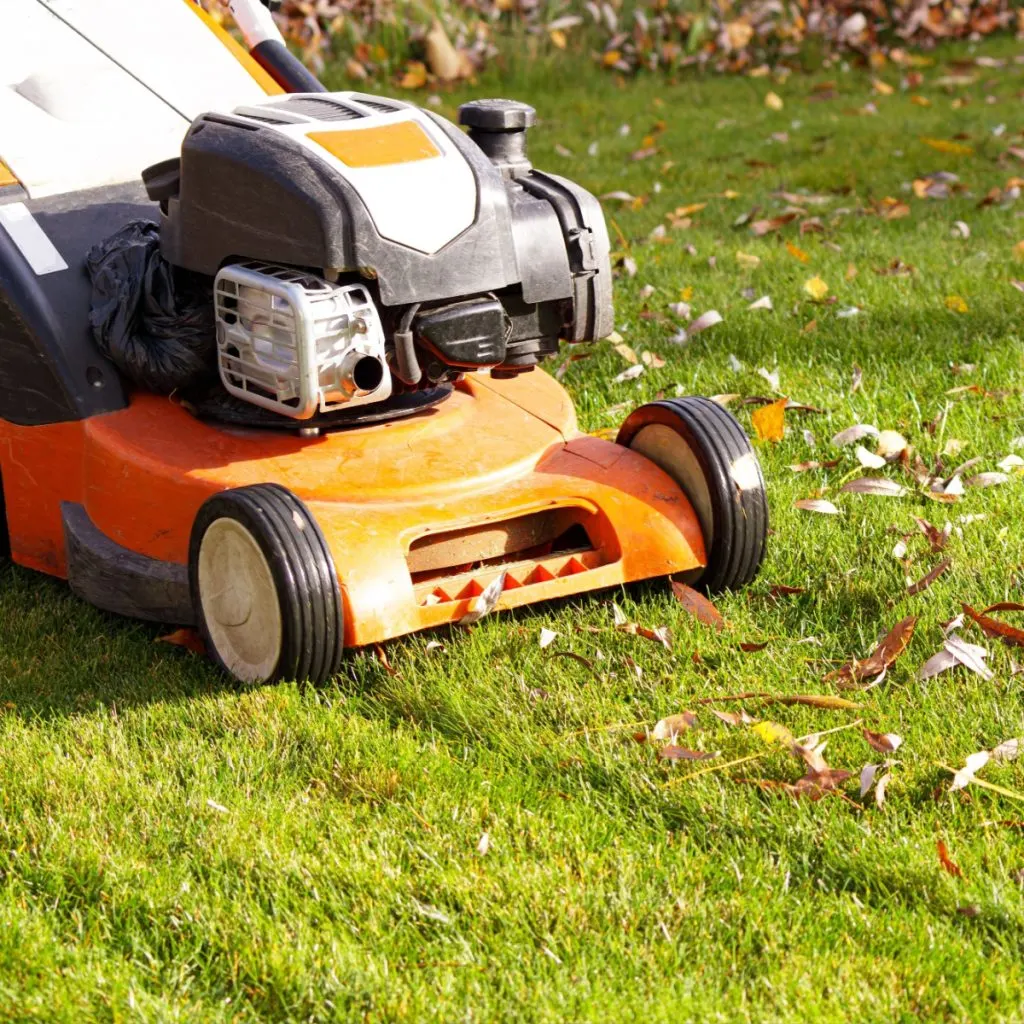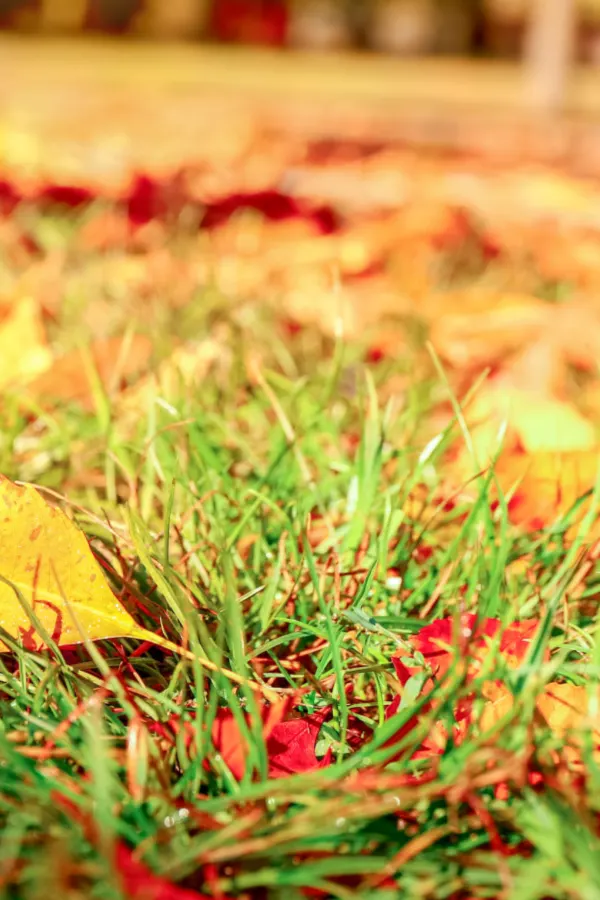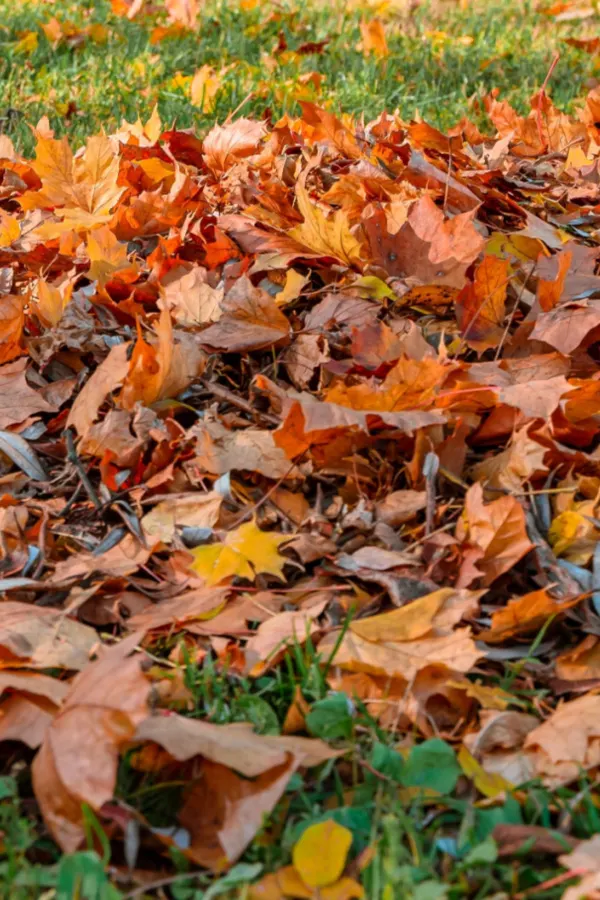One of the most important things you can do for your lawn is to mow it one last time in late fall before winter arrives. Not only is it great for keeping your yard neat and tidy all through the winter months, it can also have a big impact on the overall health and beauty of your yard next year!
Although lawns head quickly into dormancy after the first few hard frosts or freeze, they can still sustain damage after they stop growing. Especially if they haven’t been properly prepared for winter.
Unfortunately, all too often, as lawns stop growing, they become an afterthought for many gardeners. After all, since they aren’t really growing, do you really need to worry about them? As it turns out, even though your lawn might not be active in late fall – the answer is a resounding yes!

Not only can lawns benefit from a final mowing that is far shorter than a regular mowing – a little extra TLC beyond that can really set the stage for a great lawn next spring and summer.
How To Mow Your Lawn For The Last Time – Before Winter Arrives!
In the spring and summer, lawns should always be mowed and kept at a taller height. A good mowing height for spring and summer lawns is somewhere between 3-1/2″ to 4″ inches tall. This allows the turf enough height to provide shade to the soil and roots below.
And that shade is key to conserving moisture in the soil, which in turn helps keep lawns green and healthy. Mowing a bit higher during the warmer months also helps keep weed seeds from finding a home in bare soil, and more importantly, from having enough sunlight to germinate.
So why not keep that mowing height for your lawn through the winter? Because as winter approaches, the advantages to taller turf begin to diminish. Instead of conserving moisture, that tall cover of turf never allows the grass to dry out completely. Especially in the damp, cool conditions that autumn provides.
Overly tall and thick lawns are a prime target for mold, fungus and other turf diseases. In addition, they can also become a refuge for insects and pests to overwinter. Last but not least, a tall lawn can mat together and be damaged by heavy winter snowfalls and ice.
But believe it or not, by simply mowing a little bit lower before fall, you can help fend off all of the above. And in the process, set the stage for a better lawn next spring as well.

The Final Mow – How To Mow Your Lawn For The Last Time
So when should you mow your lawn for the last time? And what is the ideal height to mow it at before winter arrives?
The ideal time to mow your lawn for the last time is after it has gone completely dormant. This is usually after a few hard frosts and a freeze have finally turned the turf to a pale green or brownish-green. Once this occurs – it’s time to lower that mower and trim off your grass to winter height.
Although tall turf can cause serious issues, scalping a lawn can certainly cause problems as well. Mowing a lawn too close to the ground will leave roots vulnerable to freezing out. It can also leave soil overly exposed to weed seeds blowing in and taking root.
With that said, the ideal winter height for a lawn should be close to 2-1/2″ in height. This allows enough turf to still protect roots through winter, without leaving too much on top to invite problems.

Beyond The Final Mowing – How To Mow Your Lawn For The Last Time
Once you mow for the final time – it’s important to make sure your lawn doesn’t suffer from other late season issues that also cause serious damage and stress. And the biggest issue for late season lawns is leaves. Especially whole leaves.
Leaves that pile too deeply on the surface of a lawn can quickly suffocate grass and the roots below. Not only can it leave yards with bare spots by spring – those same leaves can also harbor insects and disease as well.
The result is a spotty spring lawn with plenty of bare spots where the turf has been killed off. Much like the tall turf in the fall, a heavy coat of leaves can also keep moisture present. And that leads to the threat of mold and fungus.
Don’t allow leaves to pile up on your lawn. Shredding the leaves with a mower on a consistent basis, or raking them regularly can pay big dividends for your grass. Not only are all of those whole leaves good to get off of your lawn, they also happen to be perfect for creating the perfect fall compost pile! How To Compost Leaves Fast – 4 Secrets To Turn Leaves Into Great Compost This Fall!

Preparing Your Mower For Winter – How To Mow Your Lawn For The Last Time
Last but not least, not only does your lawn need to prepare for winter, but so does your lawn mower. Take time this fall to clean the deck, sharpen the blades and grease any fittings. See: How To Prepare Gas Mowers & String Trimmers For Winter – So They Start Again Next Year! It’s far easier to do all of these things now – and not in the spring when you will be mowing and gardening at full tilt!
In addition, be sure to either run your mower out of fuel, or add a fuel stabilizer to keep the gas from going bad over winter. Affiliate Link: STA-BIL Storage Fuel Stabilizer | Keeps Fuel Fresh for 24 Months
Here is to mowing your lawn the last time this year at just the right height. And – to an even better lawn next spring!
This Is My Garden
Follow Our Facebook Page For Great Gardening Tips And Advice! This Is My Garden Facebook Page
This Is My Garden is a garden website created by gardeners, for gardeners. Jim and Mary Competti have been writing gardening, DIY and recipe articles and books and speaking for over 15 years from their 46 acre Ohio farm. They publish three articles every week, 52 weeks a year. Sign up today to follow via email, or follow along!
